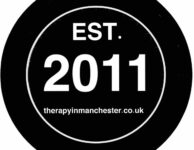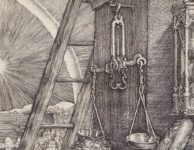Spotlight on Identity
Self-Recognition and Therapy

How Do We Develop a Sense of Identity?
In his concise and accessible book on the unconscious, Anthony Easthope asks:
‘How is it that within five or six years the newly arrived [baby] you bring home with you from the hospital has become a person, who speaks your language, shares your assumptions, can go off to school and answer its own name when the teacher calls it out?’
Easthope draws attention to one of the most fundamental questions in identity formation: How do we come to recognize ourselves as individuals?
For psychologists and therapists, identity is shaped by identifications—a process that begins in early childhood, particularly during what is known as the mirror phase.
What Is the Mirror Phase in Psychology?
The mirror phase was developed as a concept in therapy after psychologists observed infants between 6 and 18 months when placed in front of a mirror.
As shown in the video clip below, when a mother introduces her child to their reflection, the child becomes captivated by the image.
Notice the child’s delight as they interact with the reflection. It’s as if the image gives them a newfound sense of unity—a coherence they have not yet fully developed.
This moment marks an early step in self-recognition, where the child starts to associate with an external image as their own.
The Mirror Mark Test: When Self-Recognition Becomes Stable
By around 18 to 24 months, this sense of identity becomes more stable, as demonstrated in the mirror mark test (also called the rouge test).
In this test, a small mark is placed on the child’s nose before they are shown their reflection.
If the child touches the mark on their nose, rather than just reaching for the mirror, it suggests they have recognized that the reflection is a representation of themselves.
This marks an important stage in self-awareness—the first clear formulation of:
“I am that image” and “That image is me”.
The Mirror Phase in Therapy
For developmental psychologists, the mirror phase represents a specific stage in infant development.
However, psychotherapists view it as a process that continues throughout life. Our sense of self is constantly shaped by the images and reflections we encounter in others—whether literal or metaphorical.
For example, we don’t always need an actual mirror to recognize ourselves, as the image can also come from:
• Words spoken to us (“You’re the best daughter in the world!”).
• How others respond to us in relationships.
• Professional or social labels (“You are a leader.”).
An illustration of this can be seen in the next video.
How Others Shape Our Identity: “You Are a Writer!”
In the video below, music journalist Paul Morley describes a pivotal moment in his career—the moment he first recognised himself as a writer.
This realisation came when broadcaster Tony Wilson simply told him: You are a writer.
Morley describes the impact of hearing these words from someone established in the industry: A professional media person saying to me, ‘You are a writer’-that is incredible… a moment of like, oh really!
Perhaps we can even detect a sense of jubilation in his recognition, one that echoes the delight of the infant we looked at earlier.
Just as a child recognises themselves in the mirror, we often see and identify with the self reflected in the words and images others provide.
How Others Shape Our Identity: “An Abject Impostor”
The mirror image doesn’t simply reflect appearance — it reflects recognisability.
In the next clip, Jeff Lynne describes the anticipation of seeing himself as a successful songwriter.
When he sees his reflection, however, he becomes upset — not so much by a mismatch between how he imagined himself and how he appears, but by a collapse of recognisability: the reflection in the mirror is not his.
Lynne recalls his first hit as a songwriter with The Idle Race, Impostors of Life’s Magazine.
At the end, can we be certain who — or what — he refers to as though an abject impostor? The loss of the coordinates that once guaranteed his place appears to result in a form of symbolic destitution, the inverse of the jubilation in the previous clip.
Identity and the Symbolic: The Role of Language
As we have just seen, the real question may be this: to whom — or to what — is the image in which you recognise yourself addressed?

Are you ready to slim with cherry stalk?
Outdoor advertisement by Speed Medya for Bioder.
Which image is the reflection?
The earlier videos of infants in front of a mirror reveal another crucial aspect of identity formation.
Before each child fully embraces the reflection as their own, they turn toward their mother, seeking confirmation:
“Yes, baby, that’s you!”
This shows that identity is not just about self-recognition—it also depends on social validation and language, the Other.
In this moment, the mirror image becomes a reflection only because it is confirmed as such.
• Identity isn’t just about similarity (“That’s me!”).
• It also depends on words, language, and social structures.
The baby becomes bound to their image by words, and how they come to take up those words will shape their sense of self.
Beyond the image and similarity – language and the symbolic register
The symbolic register refers to the aspect of human existence where identity is shaped by language, cultural norms, and social expectations.
The image below, taken from the website Fabulous Life, draws on the registers of the image and the symbolic.
For instance, the use of the word ‘judged’ connects ideas of similarity or sameness to social conventions and rules.

The caption to this image in Fabulous Life reads, “You could be a successful professional raking and having recently acquired a swanky car, but if you are dressed shabbily with food stains on your clothes and with two days’ growth of stubble on your face, then you will be judged accordingly. We’re here to make sure that never happens to you! Read on the essential style and grooming tips and get a grip on how to make a great first impression.”
This reflects a key point:
• Identifications can be empowering, sometimes even life-changing. (“I am a writer!”)
• But they can also become rigid, keeping us stuck when change is necessary.
A common theme in therapy is questioning the identities we have assumed – and for whom we have assumed them: “I’m not ‘the strong type’ after all!”
If you ask yourself, “Who am I?” you might be surprised by what surfaces.
Not Everyone Will Answer Their Name
We began with Easthope’s observation: how, in just a few years, a baby develops a stable and coherent sense of self—able to speak, go to school, and respond to their name.
However, as we’ve seen, this depends on the baby entering the world of its caregivers as well as the world of social structures.
There is no guarantee that this process happens for everyone.
Not everyone answers their name when called.
Final Thoughts
Therapy can help uncover who we identify with, why, and whether those identifications still serve us.
If you’re interested in exploring your own sense of self, contact us today to book an appointment →
Notes
Easthope’s quote is from The Unconscious (1999, p.59).
The mirror phase became important to therapists through the work of Jacques Lacan.
* See chapter 2 of Bice Benvenuto and Roger Kennedy, The Works of Jacques Lacan, Free Association Books (1986).
* Darian Leader, Jouissance: Sexuality, Suffering and Satisfaction, Polity (2021), pp.40-50.
The page from Fabulous Life (accessed June 2019) is here,
http://fabulouslifeforyou.blogspot.com/2014/10/20-very-easy-and-essential-style-and.html
Sources of all videos are given on our YouTube channel, Therapy in Manchester
Originally written in July 2019, with light revisions in March 2025




